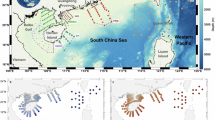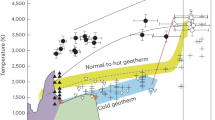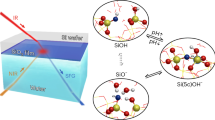Abstract
IN the often very difficult task of following the movements of coastal and oceanic water masses, much use has been made of the temperature, the salinity and the amount of oxygen in solution. In special cases the concentrations of silica or of hydrogen ions may give useful information.
This is a preview of subscription content, access via your institution
Access options
Subscribe to this journal
Receive 51 print issues and online access
$199.00 per year
only $3.90 per issue
Buy this article
- Purchase on SpringerLink
- Instant access to full article PDF
Prices may be subject to local taxes which are calculated during checkout
Similar content being viewed by others
References
Atkins, W. R. G., and Jenkins, Pamela G., J. Mar. Biol. Assoc. U.K., 31, 503, Fig. 8 (1953). Atkins, W. R. G., Jenkins, Pamela G., and Warren, F. J., ibid., 33, 501, Fig. 1 (1954).
Atkins, W. R. G., and Poole, H. H., Sci. Proc. Roy. Dublin Soc., 20 (4), 13 (1931).
Klincksieck, P., and Valette, Th., “Code des Couleurs” (Paris, 1908).
Ridgway, R., “A Nomenclature of Colours for Naturalists” (Boston, 1886).
Author information
Authors and Affiliations
Rights and permissions
About this article
Cite this article
ATKINS, W., JENKINS, P. Identification of Water-Masses by their Suspended Matter. Nature 175, 951 (1955). https://doi.org/10.1038/175951a0
Issue date:
DOI: https://doi.org/10.1038/175951a0



